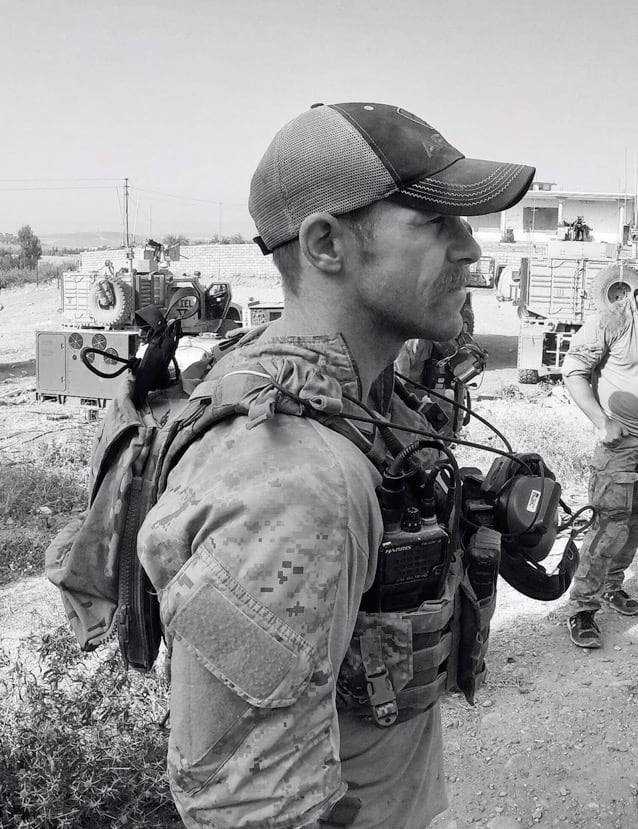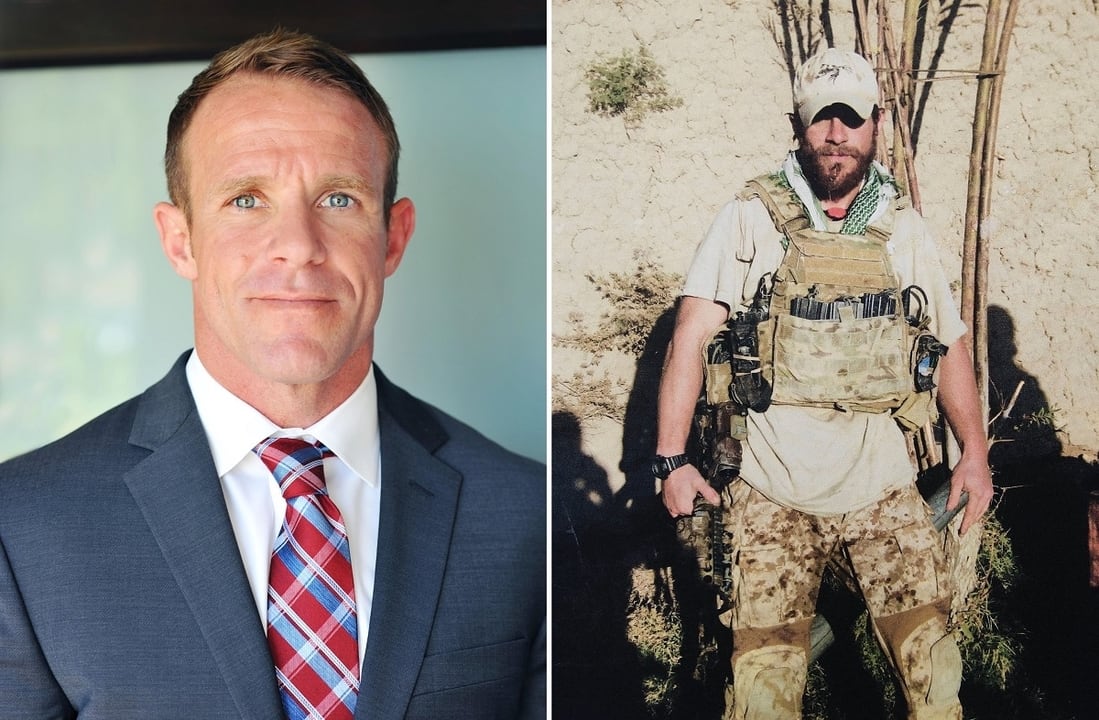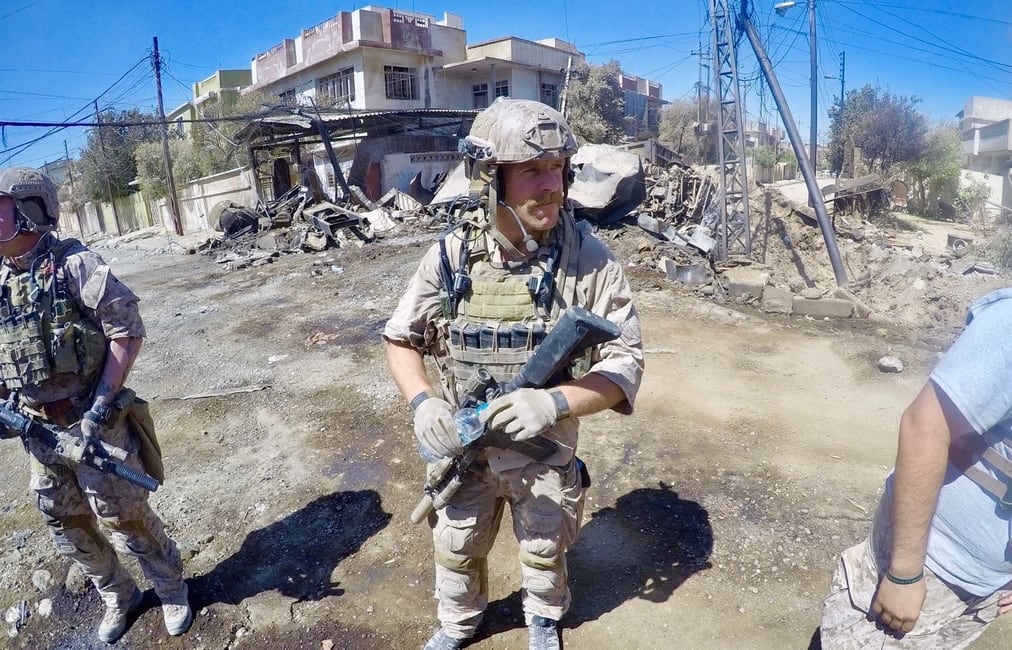The military judge overseeing the court-martial proceedings for accused SEAL war criminal Chief Special Warfare Operator Edward “Eddie” Gallagher has ruled that information gleaned from his seized cell phones can be used as evidence by the prosecution.
Capt. Aaron Rugh’s decision late Friday clears prosecutors to use a string of text messages and other data they believe will buttress their allegations that Gallagher, 39, stabbed to death a seriously wounded and unarmed Islamic State prisoner of war during a 2017 deployment to Iraq and later tried to cover up the killing and intimidate potential witnesses.
A spokesman for Navy Region Southwest, the convening authority in Gallagher’s court-martial trial at Naval Base San Diego, declined comment.
Gallagher’s civilian defense attorney, Timothy Parlatore, downplayed the significance of the ruling.
“It doesn’t really change anything on our end,” said Parlatore, a former Navy Surface Warfare Officer. “It certainly won’t affect the outcome of this case.”
Parlatore declined to comment further, saying he couldn’t directly discuss the decision due to a different ruling by Rugh on Thursday that imposed a gag order prohibiting attorneys from discussing the court’s decisions, motions and other court filings in the SEAL’s case.
As for a Gallagher text message that seems to suggest that he slayed someone with a knife, Parlatore wrote it off as the “dark humor” shared between combat-hardened men.
And Parlatore said Team Gallagher was celebrating a Friday victory, too. He said that Naval Special Warfare Group 1 commodore Capt. Matthew D. Rosenbloom agreed to key concessions on the SEAL suspect’s living arrangements.
Gallagher is now allowed a phone to call his attorneys and family members from pretrial quarters at Naval Medical Center San Diego, where he was moved after a brief stay at Marine Corps Air Station Miramar.
He’ll also get a computer.
A tweeting President Donald J. Trump on March 30 ordered the Navy to remove Gallagher from Naval Consolidated Brig Miramar to less restrictive conditions.

Only moments after Rugh on Thursday ordered a blanket gag order on the Gallagher case, Navy Times began receiving what would become thousands of pages of legal motions and orders, plus internal Naval Criminal Investigative Service files, Naval Special Warfare emails, photographs and other highly relevant records tied to the trial, a deluge of documents that kept flowing well into Saturday morning.
Gallagher has been charged with premeditated murder in connection with the Iraqi fighter’s death, attempted murder for allegedly shooting an old man and a child and other crimes tied to what military prosecutors said was an ongoing attempt to obstruct justice.
On Jan. 11, defense attorneys filed a motion to suppress all evidence harvested from what became known as cell phone X, cell phone Y and cell phone Z.
Gallagher’s legal team argued that investigators unlawfully seized all three phones, at times violating Gallagher’s Fourth and Fifth amendment rights, which protect Americans from unreasonable surveillance, searches and seizures, including safeguarding criminal suspects from self-incrimination.
The phone known as cell phone X, Gallagher’s attorneys wrote, was an iPhone confiscated during a June 20 pat-down frisk before NCIS attempted to interrogate him, without his lawyer present and with agents allegedly relying on a verbal command authorization for search and seizure — what’s called “CASS” in the military — that didn’t adequately specify what was to be taken.
While detained, Gallagher was ordered to unlock his phone to allow NCIS to search it. He tried to open it with his fingerprint, but it shook and wouldn’t open, so he punched in the pass code, which let agents seize the evidence on it.
RELATED

In a Jan. 18 response by Marine Capt. Conor L. McMahon, military prosecutors described the scene a little differently.
He wrote that while NCIS Special Agent Ian Loske confiscated Gallagher’s phone, Gallagher was afforded the chance to call his lawyer but he couldn’t reach Texas-based attorney Colby Vokey, who has since exited his legal team.
The verbal CASS that allegedly was issued by Navy Capt. Roy Love, the commanding officer of Naval Base San Diego, was only designed to find evidence linked to the murder charge, McMahon said.
The plan to get Gallagher to use his fingerprint to unlock the phone was hatched by the lead NCIS agent, Joe Warpinski, according to McMahon.
He told a pair of special agents, Brian Frank and Chris Leiphart, that to avoid confusing chatter, only he would talk to Gallagher. He would ask the suspect to use the phone’s biometric feature to unlock it.
Because Gallagher “had asked for an attorney, I knew I could not ask him for his pass code and I could not ask him to enter his pass code,” Warpinski later said in an affidavit.
Some appellate courts have held that police are allowed to compel a suspect to unlock a cell phone with a fingerprint because the act is “non-testimonial.”
That means that the authorities don’t force a suspect to reveal any incriminating contents of his or her mind, which would include a pass code, McMahon argued.
Warpinski insisted that he never asked Gallagher for the code or even mentioned it to him.
But when Gallagher’s fingerprint failed to open the phone — a glitch that occurs with a sweaty or dirty finger or if the wrong digit is used — “the accused made a scoffing or frustrated type of noise and began typing in his pass code,” McMahon wrote.
Warpinski said that he sidled up to Gallagher to make sure he didn’t start erasing data, but it also allowed him to watch him type in the pass code.
Warpinski wrote down the code and used it to access phones Y and Z, too.
“The accused chose to enter the pass code under circumstances where he had no reasonable expectation of privacy, without any prompting from NCIS, ” McMahon later wrote.
But he added that Warpinski’s maneuver wasn’t necessary.
“While law enforcement agencies have struggled to unlock locked phones in the past, NCIS had recently acquired the technology to bypass the security features of a locked phone and gain access to the device through a digital forensic examiner,” McMahon wrote.
On June 21, NCIS received a written CASS from Love that allegedly memorialized his discussion with agents green lighting the confiscation, both sides wrote.
RELATED

Cell phone Y was seized during a search of Gallagher’s Point Loma home while he was detained by NCIS. But his attorneys contended that the warrant signed by federal Magistrate Nita L. Stormes wasn’t specific enough about the device to be confiscated and analyzed.
McMahon disagreed, saying that it allowed for the seizure of “any cell phones or mobile devices" that might provide evidence that Gallagher committed murder and agents were acting in the good faith belief that the evidence they gleaned wouldn’t be suppressed.
What’s odd, however, is that the commanding officer of Naval Base San Diego didn’t issue a CASS until Jan. 18 for cell phone Y, almost seven months after it was confiscated by NCIS, according to McMahon’s filing.
That coincided with a round of CASS requests from the commander targeting Naval Special Warfare Development Group — which also is known as DEVGRU or SEAL Team 6.
In other words, those who allegedly were on the other end of Gallagher’s conversations, should the judge have ruled against the prosecution on the NCIS cell phone confiscations.
As for cell phone Z, it was taken without any warrant or CASS on Sept. 11 by Marine Corps Base Camp Pendleton officials while Gallagher was receiving medical care there, which made it an illegal confiscation, his attorneys argued.
But McMahon said the contents of the device weren’t fully gleaned until a data extraction was performed while on Navy property between Oct. 12 and Oct. 30, pursuant to a CASS issued by a Navy commander, which removed the Marines from the case.
It remains unclear if Parlatore will appeal the judge’s decision.
Gallagher’s trial is slated to begin May 28 at Naval Base San Diego.





